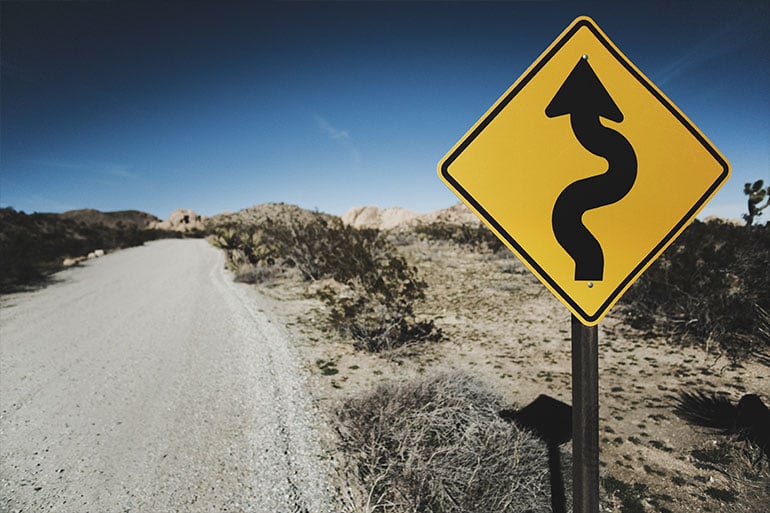December 28, 2023
August 17, 2021
There’s no better way to get to know Spain than driving, but you should acquaint yourself with the full scope of road rules before you embark on your adventure across this beautiful country.
First things first, it’s important to bear in mind that all foreigners are allowed to use their valid license from their country of origin to drive in any part of Spain; however, after a certain period of time, if you’re still living in the country, you will have to obtain the Spanish driver’s license.
Basic road rules
- If you’re the car owner, you should carry two warning triangles if the car is registered in Spain. You should also carry a complete set of fuses, a spare wheel, bulbs, and the tools you might need in case you need to replace any of them.
- If your car is registered outside of the country, you’re not obliged to have any of the things we mentioned above unless you are required to carry them in your country of origin.
But you should keep in mind that if your vehicle breaks down, you’re going to be subject to Spanish law, so you might be at risk of a fine if you don’t use warning triangles or a hi-vis jacket on the open road.
- You should always have a valid license and up-to-date insurance documentation to hand.
License for foreign residents
All EU/EEA citizens (drivers) living in Spain for over two years must obtain a Spanish license.
Any drivers who are not members of EU/EEA countries should also exchange their licenses for the valid Spanish counterpart, but the conditions for this process are very different. Citizens have to exchange their foreign license at the Provincial Traffic Headquarters.
Citizens whose countries of origin do not have an agreement with Spain regarding the exchange of licenses, will have to take both the theory and practical tests and will also be required to become a member of a driving school.
Road taxes
You have to ensure that the local car tax is paid in full each year. If your vehicle is over 4 years old, you must pass an ITV every two years until it’s 10 years old. The ITV is the Spanish equivalent of an MOT test (vehicle inspection).
- What are you required to carry in your Spanish car?
- The log book.
- The ITV card and report.
- Proof of valid car insurance. Check out our post comparing the different types of car insurance in Spain.
- Foreign vehicles must have:
- The log book.
- Proof of valid car insurance.
- Any certificate equivalent to the
For further information on applicable car taxes in Spain, check out this blog post.
Road fines
It’s perfectly normal to get fined for a traffic offence, but you should keep in mind how it works in Spain.
- All citizens that have a NIE or Spanish residency will get a notification of the fine at their address in any Spanish city.
- Citizens that don’t have a NIE are required to pay the fine on the spot.
Speed limits
You need to take this matter seriously, considering that a large percentage of fines are issued for speeding:
- Up to 50km/h in town, residential and built-up areas.
- Up to 90km/h out of town.
- Up to 100km/h on dual carriageways and roads with overtaking lanes.
- Up to 120km/h on motorways.
The speed limits are lower for motor caravans and vehicles with trailers.
Information
Don’t forget that you can call 011 for information regarding traffic conditions, and this number is operative in any part of Spain.
You can find more information on the official website of the Spanish Directorate- General for Traffic here.
Best road trips
Now that we’ve brought you up to speed on the Spanish road rules you should be aware of, it’s time to hit the road, so here’s our list of 5 beautiful routes you can explore with friends and family.
- In the northern part of the Costa Brava along the coastline, you will find the most stunning Roman and Greek ruins, until you get to the former house of Salvador Dalí just outside the gorgeous town of Cadaqués. This route is known as the Alt Empordà.
- Near the capital and only an hour’s drive, passing through the huge and stunning monastery of Felipe II, you will find one of the most well-preserved walled cities of Spain: Ávila. This route is through El Escorial.
- We’re now in Valencia where the sun and the sand meet, creating the perfect spot for anyone looking for peace and quiet. Through the rural inland with a 55 km road trip from the Calpe to Alcoy.
- If you love the snow and the feeling of being out in the wilderness, through a marvelous, mountainous 42-km rout over the Bonaigua Pass to reach the beautiful Pyreness, you can follow this route known as the Vielha to Esterrid’Aneau.
- In stunning Gipuzkoa, you can start your trip in San Sebastian where you can immerse yourself in all the Basque traditions and culture, until you get to Tolosa, where you can enjoy their lively carnival.
We are all well aware of the sense of freedom that driving provides, but we should be equally aware of the road rules in your new expat country as it is likely that they don’t completely correspond to those that apply in your country of origin. To ensure that you are always up to speed on any changes to current regulations, be sure to avoid misinformation by visiting official government website.
Enjoy exploring Spain and most importantly, safe driving.
.png?width=344&height=67&name=logo_caser%20(2).png)










Let Us Know What You Thought about this Post.
Put your Comment Below.